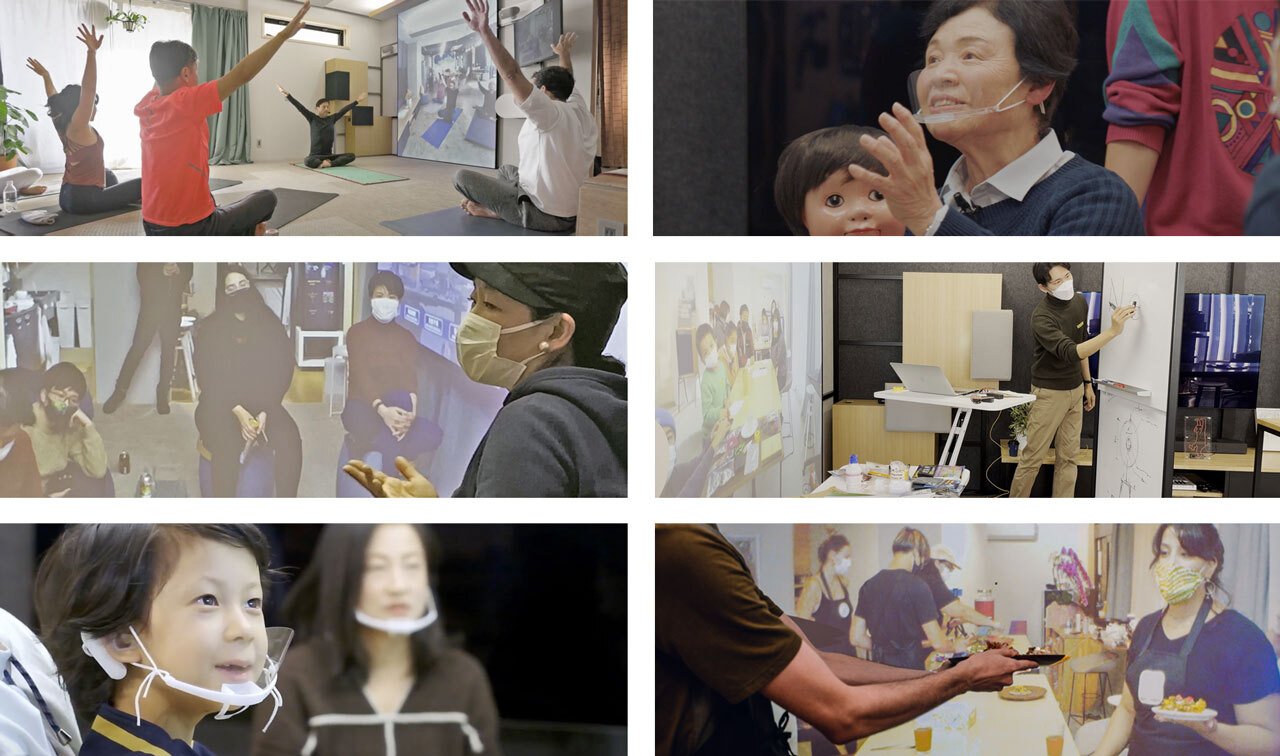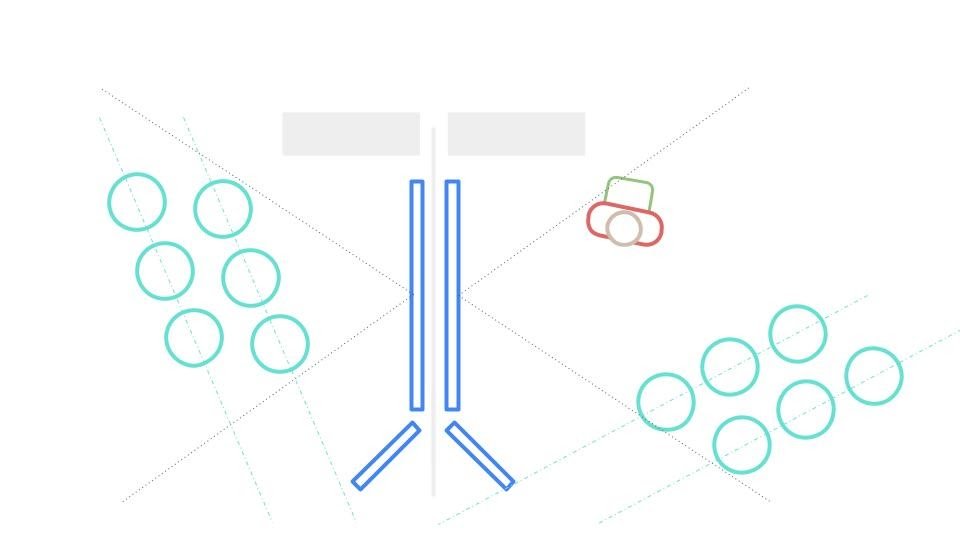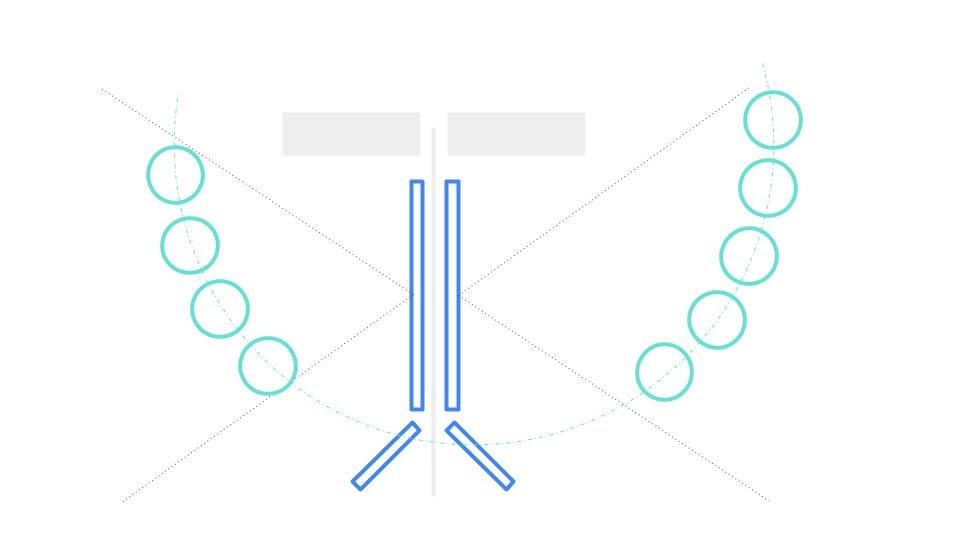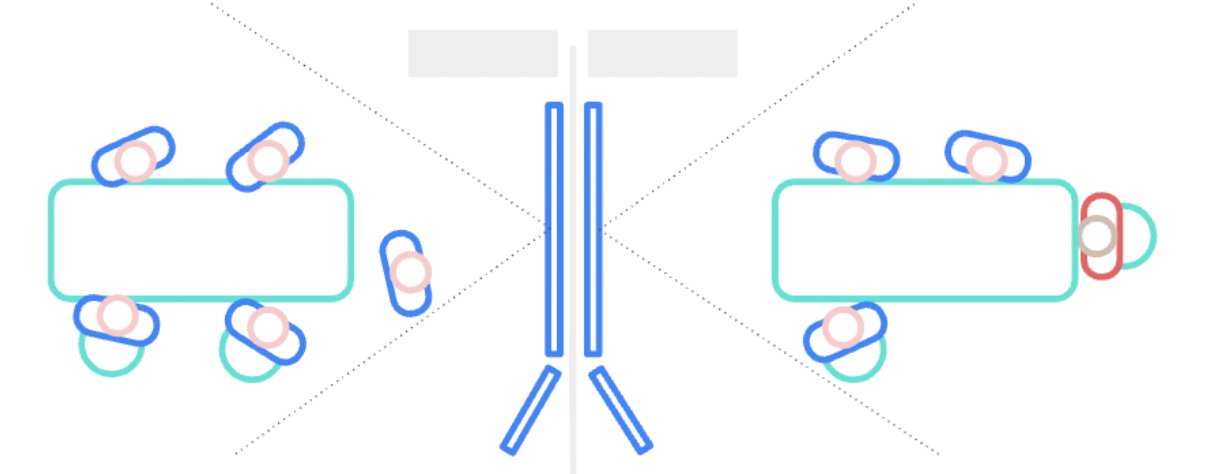Hi, I’m Zucca from tonari! A little about me: though I live in Japan, I actually spent most of my youth in Italy and South Africa. 🇯🇵🇮🇹🇿🇦
In fact, more than half of the tonari team hails from overseas. During the pandemic many of us have been unable to physically be with our families and friends around the world. This is a new and harsh reality not just for us and many others, but perhaps even more so for those with disabilities, the elderly, or people living in difficult-to-access rural communities.
Even before the pandemic, the idea of enabling intimacy across distances was important to our founding as a social venture. tonari’s mission is to create a world unbounded by distance, with access to work, education, and community everywhere. Since 2017, we’ve been developing a technology and service to connect distant places into one shared space; and in September 2021 we started tonari lab, an experimental space to explore how tonari can be used in relation to communities, families, education, and disabilities.
Our first six experiments at tonari lab
From September to December of 2021, we conducted six experiments in our lab between Hayama and Tokyo:
- Mexican cooking class — 2021/09/10
- Yoga class and breakfast — 2021/10/23
- Sign language presentation (co-hosted with Silent Voice) — 2021/11/15
- Atomic bomb survivor testimonial (co-hosted with Peace Boat) — 2021/12/06
- Kids neon sign workshop — 2021/12/11
- Film screening and Q&A — 2021/12/13

We chose these experiments among dozens of proposals based on their diversity and relevance to our research themes. We then worked with our community and co-organizers to produce events and invited participants to test tonari and share their feedback.
For each experiment we considered our hypotheses, carefully crafted the way in which we would conduct the event, and designed the layout between the tonari-connected spaces. We also took photos and videos, and conducted surveys and follow-up interviews with event participants.
In this report we summarize our findings for how tonari closes the gap across distances, and enables intimacy in learning, sharing, and overall enjoyment for a variety of activities. Across the six experiments, we observed four common elements that made participants feel closer:
- Universal design – tonari is easy and natural for anyone to use
- Hands-on interaction – tonari is effective for hands-on and participatory learning
- Co-presence – tonari allows people to feel they are inhabiting the same space together
- Shared layout – setting the right layout is important for usability and a sense of unity
How did tonari make participants feel closer?
#1: Universal design
tonari is easy and natural for anyone to use
The age range of participants in our experiments varied widely, from 84-year-old Kotani-san, a Hiroshima atomic bomb survivor, to children under 10. In all cases, children, adults, and seniors alike were able to use tonari without having any prior knowledge or explanation. Moreover, conversations were fluid, and we witnessed many natural interactions between strangers, often beginning with a simple "Hello! What's your name?"
During an after school class conducted with Silent Voice, a non-profit providing educational support for children with hearing disabilities, we learned from the sign language interpreter that "Sign language uses not just hands and facial expressions, but requires use of the entire body,” and that "tonari provides an excellent environment for distant learning and teaching in sign language." Compared to other video communication tools – which severely limit the range of visibility and tend to have disruptive delays – tonari's design provides a sense of warmth and a comfortable environment for its users.
Many parents have also shared that it’s difficult for young children to stay focused in any class setting, especially when the communication is online and requires sitting in front of a PC for long periods of time. By contrast, participants noted that tonari with its life-sized presence and wide range of visibility, is much closer to an in-person class. This allows people to move about with less disruptive breaks.
With tonari, we noted that younger children (aged 5~10) were able to focus, and most importantly enjoy hour-long classes – even breaking into moments of dance and play while simultaneously remaining part of the conversation.
In another experiment we conducted with Peace Boat's "Orizuru (Paper Crane) Project," we welcomed Kotani-san, an 84-year-old Hiroshima atomic bomb survivor, into our space in Tokyo to speak to elementary school children in both Hayama and Tokyo. Kotani-san previously traveled the world with Peace Boat to promote the abolition of nuclear weapons. However, with advancing age, it’s becoming more difficult for her and other survivors to travel and share their experiences with children in other countries.
All participants in Hayama and Tokyo agreed Kotani-san's testimony conveyed the horror of the atomic bombing, with many of the attending parents showing tears of emotion. Feedback from participants and Kotani-san confirmed our hypothesis that tonari can transcend physical boundaries and create shared experiences, regardless of physical distances or borders.
#2: Hands-on interaction
tonari is effective for hands-on and participatory learning
tonari doesn't have any noticeable lag in its video or audio, which makes it especially good at supporting fluid conversations and interactions. We hypothesized that in distant learning environments with tonari, students can focus more on the materials at-hand, and ask questions or begin discussions without inadvertently interrupting their classmates or the teacher.
During the family neon sign making workshop, upper-elementary and middle-school participants in Tokyo and Hayama tried hands-on and complex tasks for the first time — including using powered drills, threading EL wires, and heating black rubber tubes with lighters — all while receiving instruction from a teacher physically based in Tokyo.
Meanwhile, the instructor used a whiteboard to draw out and explain concepts, showed close-ups of how to thread the EL wire using tonari’s share screen, and was able to go through complex step-by-step instructions. He was also able to answer questions and support each participant, allowing each group to finish their original neon sign designs by the end of the workshop.
Similarly, in the Mexican cooking workshop, adult participants could see and receive instructions on how to press tortillas in the tortilla press and cook them — by pressing down firmly with the spatula, letting them inflate, and repeating on both sides. The event concluded with participants and the instructor enjoying a shared meal together. In fact, several of the participants then went off to make their own tortillas at home! It was a very fulfilling and enjoyable workshop, indeed! 😋
#3: Co-presence
tonari allows people to feel they are inhabiting the same space together
Participants for the tonari-connected yoga class noted how smoothly integrated the experience felt. One participant shared, "It was interesting to experience the contrast between the calm atmosphere of the class — where we could hear each other's breathing — and the smoothies we made and drank together afterwards in a lively and friendly atmosphere... It felt like a singular, connected experience. It was hard to believe we were 70km apart!"
Compared to other video communication tools that connect people through smaller and narrower screens, tonari creates a connected space, thus enabling a shared experience. This experience encapsulates the more subtle feelings of 'closeness' and 'intimacy' that we naturally create for ourselves when occupying the same physical space.
For example, tonari's screen is the size of a wall, so it is possible to see across an entire room. Sounds and voices are transmitted in high fidelity without the typical digital compressed sound of video calls, making the experience feel life-sized and real. The camera and microphones are placed out of sight, therefore the users do not feel they are interacting with a device and can focus entirely on their counterparts and the intimacy of the experience.
Many of our experiments engaged all five senses, in order to create meaningful shared experiences. In our final experiment, participants in Tokyo and Hayama watched a documentary about the Tsukiji fish market and listened to live commentary from one of the producers of the film — all while eating sashimi sourced directly from one of the film’s featured fishmongers.
While the setup for a joint film viewing was technically challenging, the Q&A discussion with the producer after the viewing was lively, lasting almost an hour. One of the participants noted: "Enjoying the same food and drink created a feeling of being in the same space," while another said, "Watching the documentary while lying down together in such a relaxed setting was an enjoyable experience.”
#4: Space layout
Setting the right layout is important for usability and a sense of unity
tonari is very different from other solutions because it connects physical spaces, creating the feeling of being in the same room. The ability to flexibly change the furniture layout, in order to support varying types of activities, further enhances this feeling. Below we explain several layouts that we implemented in our experiments.
V-shape for presentations
Creating a 'V' shape with the center of the tonari screen is the best layout for events with a single presenter.

This is the layout that we used for Kotani-san's atomic bomb testimonial, where participants on either side sat around Kotani-san in a V-shape. This allowed each participant to see her facial expressions and the puppet she used to act out her story.
Semi-circle for conversations
Having participants sit in a semi-circle around tonari enables each person to see and converse with one another. This is the best format for interactive group discussions.

For example, participants formed a semi-circle during the yoga class, which created a feeling of being in the same space during the practice. Seeing and learning from one another made participants forget that they were in distant spaces and supported a cohesive classroom experience.
Workshop layout
Placing large work tables in the center creates the feeling of working together at the same table.

This arrangement was used during the Mexican cooking workshop and made participants feel like they were cooking and dining on the same long work table together. "It felt like we were in the same room, enjoying the experience together," was a comment we heard from multiple participants.
Future experiments at tonari lab
In our first six experiments, we demonstrated tonari can connect and support communities, families, distant learning, and those with disabilities. While we’ve been using tonari in workplaces and among ourselves for longer, tonari lab gives us a clearer view into a future where tonari and similar technologies become more accessible.
We see tremendous value in continuing experiments at tonari lab, and we will continue accepting online applications from organizers through March 2022. Furthermore, when we are able to expand overseas, we hope to continue to challenge our findings by connecting even more distant locations and spaces in this manner. If you would like to participate in future experiments, please sign up here.
Thank you to everyone who helped organize and participate in our experiments and workshops, and for your kind support and enthusiasm. And once again, many thanks to the Nippon Foundation for the generous grant support that makes this program possible.
tonari lab gallery
Finally, if you enjoyed this post and want to explore more photos, videos, and results from our experiments, please visit the tonari lab gallery! 🧑🔬📸🎉

If you enjoyed this and want to learn more about tonari, please visit our website and follow our progress via our monthly newsletter. And if you have questions, ideas, or words of encouragement, please don't hesitate to reach out at hey@tonari.no. 👋
Find us 💙
Facebook: @heytonari Instagram: @heytonari X: @heytonari
